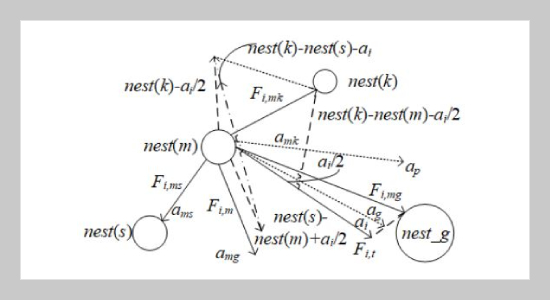REFERENCES
- [1] H. Bakir and A. A. Kulaksiz, (2020) “Modelling and voltage control of the solar-wind hybrid micro-grid with optimized STATCOM using GA and BFA" Engineering Science and Technology, an International Journal 23(3): 576–584. DOI: 10.1016/j.jestch.2019.07.009.
- [2] E. B. Agyekum, (2021) “Techno-economic comparative analysis of solar photovoltaic power systems with and without storage systems in three different climatic regions, Ghana" Sustainable Energy Technologies and Assessments 43: DOI: 10.1016/j.seta.2020.100906.
- [3] Y. Zhang, J. Ren, Y. Pu, and P. Wang, (2020) “Solar energy potential assessment: A framework to integrate geographic, technological, and economic indices for a potential analysis" Renewable Energy 149: 577–586. DOI:10.1016/j.renene.2019.12.071.
- [4] M. Kamalesh, S. Nattuthurai, B. Chokkalingam, and L. Mihet-Popa, (2021) “Mitigation of circulating current with effective energy management in low-power PVFC-battery-microgrid" International Transactions on Electrical Energy Systems 31(6): DOI: 10.1002/2050-7038.12899.
- [5] M. Ali, M. Tariq, K. A. Lodi, R. K. Chakrabortty, M. J. Ryan, B. Alamri, and C. Bharatiraja, (2021) “Robust ANN-Based Control of Modified PUC-5 Inverter for Solar PV Applications" IEEE Transactions on Industry Applications 57(4): 3863–3876. DOI: 10.1109/TIA.2021.3076032.
- [6] C. Bharatiraja, G. Ramanathan, and G. S. Ilango. “A Stand Alone Building Integrated PV Tied Bidirectional Capability Direct DC Electric Vehicle Charging System through Z-Source Inverter Impedance Network Capacitors”. In: 107. 1. Cited by: 0. 2022, 10097–10106. DOI: 10.1149/10701.10097ecst.
- [7] P. Madasamy, R. Verma, A. Rameshbabu, A. Murugesan, R. Umamageswari, J. L. Munda, C. Bharatiraja, and L. Mihet-Popa, (2021) “Neutral point clamped transformer-less multilevel converter for grid-connected photovoltaic system" Electronics (Switzerland) 10(8): DOI: 10.3390/electronics10080977.
- [8] K. A. Lodi, M. Tariq, M. M. Roomi, and C. Bharatiraja. “GA optimized SHE and proportional resonant controller tuned integration of solar PV to the AC grid using packed U cell inverter”. In: 2020-January. Cited by: 0. 2020. DOI: 10.1109/PEDES49360.2020.9379439.
- [9] H. Labar and M. S. Kelaiaia, (2018) “Real time partial shading detection and global maximum power point tracking applied to outdoor PV panel boost converter" Energy Conversion and Management 171: 1246–1254. DOI: 10.1016/j.enconman.2018.06.038.
- [10] M. Lasheen and M. Abdel-Salam, (2018) “Maximum power point tracking using Hill Climbing and ANFIS techniques for PV applications: A review and a novel hybrid approach" Energy Conversion and Management 171: 1002–1019. DOI: 10.1016/j.enconman.2018.06.003.
- [11] S. Salman, X. Ai, and Z.Wu, (2018) “Design of a P-&-O algorithm based MPPT charge controller for a stand-alone 200W PV system" Protection and Control of Modern Power Systems 3(1): DOI: 10.1186/s41601-018-0099-8.
- [12] S. Tang, Y. Xing, L. Chen, X. Song, and F. Yao, (2021) “Review and a novel strategy for mitigating hot spot of PV panels" Solar Energy 214: 51–61. DOI: 10.1016/j.solener.2020.11.047.
- [13] H. Rezk, M. Aly, M. Al-Dhaifallah, and M. Shoyama, (2019) “Design and Hardware Implementation of New Adaptive Fuzzy Logic-Based MPPT Control Method for Photovoltaic Applications" IEEE Access 7: 106427–106438. DOI: 10.1109/ACCESS.2019.2932694.
- [14] P. Jiang, Y. Luan, W. Zhang, J. Tian, and J. Dai, (2021) “A study of multi-peak MPPT based on improved PSO under partial shading." Solar Energy 42(08): 140–145.
- [15] N. Kalaiarasi, S. S. Dash, S. Paramasivam, and C. Bharatiraja, (2021) “Investigation on ANFIS aided MPPT technique for PV fed ZSI topologies in standalone applications" Journal of Applied Science and Engineering (Taiwan) 24(2): 261–269. DOI: 10.6180/jase.202104_24(2).0015.
- [16] B. Yang, T. Yu, X. Zhang, H. Li, H. Shu, Y. Sang, and L. Jiang, (2019) “Dynamic leader based collective intelligence for maximum power point tracking of PV systems affected by partial shading condition" Energy Conversion and Management 179: 286–303. DOI: 10.1016/j.enconman.2018.10.074.
- [17] B. Yang, L. Zhong, X. Zhang, H. Shu, T. Yu, H. Li, L. Jiang, and L. Sun, (2019) “Novel bio-inspired memetic salp swarm algorithm and application to MPPT for PV systems considering partial shading condition" Journal of Cleaner Production 215: 1203–1222. DOI: 10.1016/j.jclepro.2019.01.150.
- [18] X. Zhang, S. Li, T. He, B. Yang, T. Yu, H. Li, L. Jiang, and L. Sun, (2019) “Memetic reinforcement learning based maximum power point tracking design for PV systems under partial shading condition" Energy 174: 1079–1090. DOI: 10.1016/j.energy.2019.03.053.
- [19] S. Titri, C. Larbes, K. Y. Toumi, and K. Benatchba, (2017) “A new MPPT controller based on the Ant colony optimization algorithm for Photovoltaic systems under partial shading conditions" Applied Soft Computing Journal 58: 465–479. DOI: 10.1016/j.asoc.2017.05.017.
- [20] N. Kumar, I. Hussain, B. Singh, and B. K. Panigrahi, (2017) “MPPT in Dynamic Condition of Partially Shaded PV System by Using WODE Technique" IEEE Transactions on Sustainable Energy 8(3): 1204–1214. DOI: 10.1109/TSTE.2017.2669525.
- [21] R. Sridhar, S. Jeevananthan, S. Dash, and P. Vishnuram, (2017) “A new maximum power tracking in PV system during partially shaded conditions based on shuffled frog leap algorithm" Journal of Experimental and Theoretical Artificial Intelligence 29(3): 481–493. DOI: 10.1080/0952813X.2016.1186750.
- [22] E. Rashedi, H. Nezamabadi-pour, and S. Saryazdi, (2009) “GSA: A Gravitational Search Algorithm" Information Sciences 179(13): 2232–2248. DOI: 10.1016/j.ins.2009.03.004.
- [23] A. Lou, M. Yao, W. Jia, and D. Yuan, (2020) “Adaptive gravitational search algorithm improved by hybrid methods" Xi Tong Gong Cheng Yu Dian Zi Ji Shu/Systems Engineering and Electronics 42(1): 148–156. DOI: 10.3969/j.issn.1001-506X.2020.01.20.
- [24] X.-S. Yang and S. Deb, (2010) “Engineering optimisation by cuckoo search" International Journal of Mathematical Modelling and Numerical Optimisation 1(4): 330–343. DOI: 10.1504/IJMMNO.2010.035430.
- [25] S. Yazdani, H. Nezamabadi-Pour, and S. Kamyab, (2014) “A gravitational search algorithm for multimodal optimization" Swarm and Evolutionary Computation 14: 1–14. DOI: 10.1016/j.swevo.2013.08.001.









